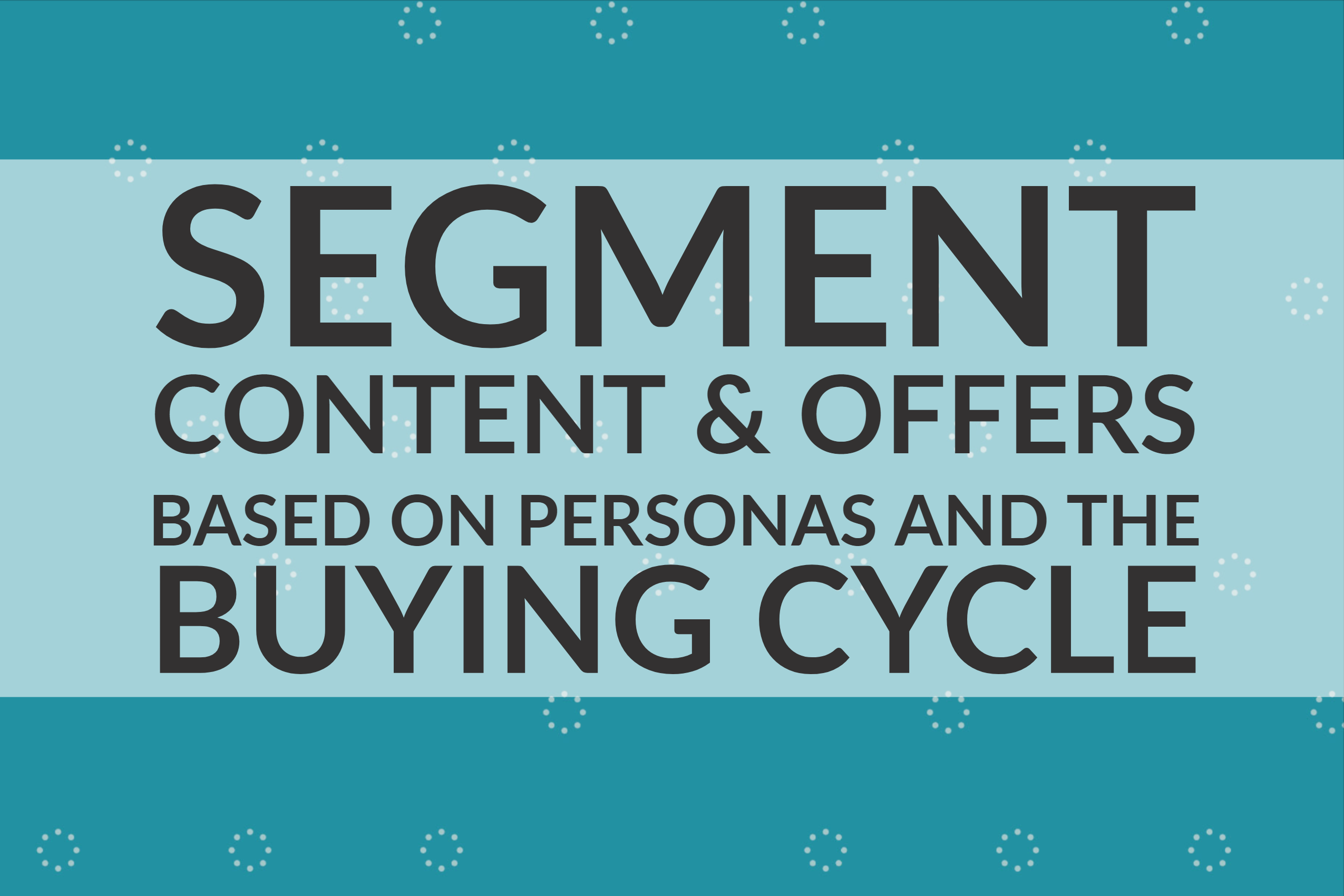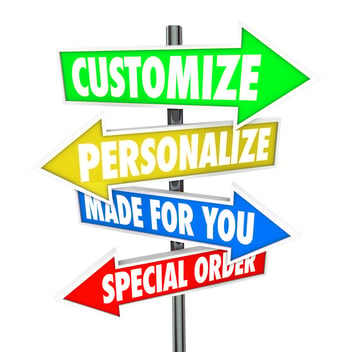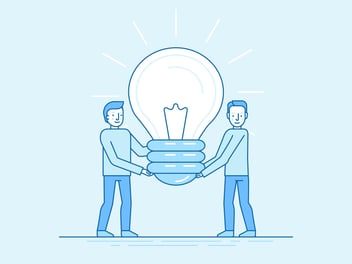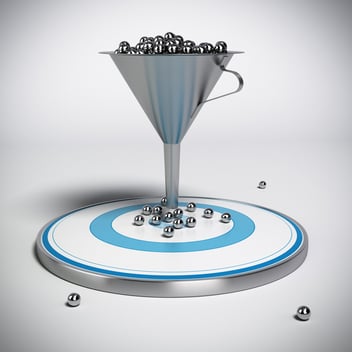Segment Content & Offers Based on Personas and the Buying Cycle
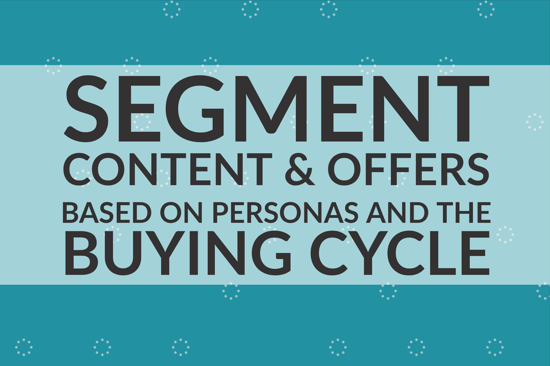
Very few things in life, despite their labeling are truly “one size fits all.” More often, attempts to make one thing fit all possible users, the end result is more of a “one size almost fits most, but isn’t really a good fit for anyone.”
When it comes to inbound marketing content and offers, that same rule of thumb applies. If you try to create just one piece of content or one offer, and expect it to appeal to all of your customer personas, regardless of what stage of the buying cycle the individual is in, chances are the content or offer will fall flat for just about everyone.
Instead, focus on creating a marketing and content strategy that includes content specifically targeting individual customer personas and specific stages of the buying cycle/customer journey/sales funnel.
Let’s look at both types of segmentation and how to tie them into your overall content planning.
Defining Your Customer Personas
In B2B marketing, you often need to consider multiple customer personas as you create your content, each of whom has a different pain point and need that your solution can address.
Consider this hypothetical example:
Registration Specialists is a healthcare IT company, providing registration software to hospitals, clinics and private healthcare providers. It offers a variety of solutions, some suited to small practices, others designed to serve large, multi-location healthcare systems. So, the marketing team creates several different customer personas, each of whom represents a different need:
-
Healthcare system CFO: This person is a key decision-maker when it comes to purchasing software, with a tendency to consider costs and revenue recovery potential over all other factors.
-
Healthcare system director of registration: This person oversees the day-to-day use of the software, and while costs and revenue recovery are among considerations, he or she also focuses on how easy the system is to use and how quickly front desk personnel can navigate it as patients wait to check in.
-
Private practice provider: This person has a small office, with only one or two people trained to use the software, and would prefer something that blends registration, patient records, billing, and insurance claims processing in a single platform, reducing the number of vendors they deal with and the complication of navigating between systems.
You can see that you will want to create different content for each of those personas. But let’s take a step back — how do you create customer or buyer personas? The descriptions above include only a small sampling of the characteristics you should consider when creating your customer personas.
(Click here to learn more about why creating buyer personas is a key part of brand development, or download a sample of a complete persona description.)
Identify these 10 characteristics for each of your customer personas:
1. Job title
2. Typical age
3. Level of involvement (user, influencer, decision maker)
4. Career goals: What impacts this person’s ability to be promoted? Who is the competition? How can this person differentiate himself/herself?
5. Frustration and pain points: What pitfalls does this person face on the job? What keeps her up at night?
6. How can you solve the persona’s problems?
7. Where will this persona look for information? Where does she go online for research? What search terms will she use? Does she use social media?
8. What type of information and content will this persona want? Is she looking for quick information, or in-depth details? Does she prefer text, images or video?
9. What are the main marketing messages you want this persona to hear?
10. What is the core value proposition for this persona?
With these characteristics discussed and outlined in detail, you have a solid foundation to use as a basis for creating tightly targeted marketing content.
Find more resources about creating and using buyer personas in these blog posts and downloads:
Defining Customer Life Cycle Stages
Each company will have its own way of defining life cycles within the marketing and sales system, depending on the complexity of its products or services, the industry, and whether it is a B2C or B2B business. Here are three different ways to look at the customer life cycle, sometimes also called the buyers’ journey. Each has its place and can help guide your decision-making as you segment your own contacts.
1. Simple customer life cycle: Cold, warm or hot
This simple three-step cycle provides an overview that could be applicable to nearly any business — even impulse purchases at the convenience store.
In the “cold” stage, prospects aren’t at all ready to buy. But that doesn’t mean you should ignore them; instead, provide useful information that they may remember at a later time. This might be the Facebook status comparing your energy drink to the industry leader: “7 of 10 energy drink users preferred the taste of JONES Juice to Red Bull!”
Warm prospects are considering their options: the customer walking into the convenience store thinking about a drink, but not sure what fits his needs today. That’s where he sees the display echoing that Facebook status, but complete with a picture of the sports star who endorses JONES Juice and an ingredient list that shows JONES Juice uses only organic ingredients, helping him solve the problem of trying to avoid artificial sweeteners. Now we’ve got him thinking more about an energy drink, and he walks to the cooler.
Hot prospect: Ready to buy an energy drink! So how do we clinch the deal? Shelf display with a 50-cent coupon. Sold!
So, that may not look quite like inbound marketing (because it isn’t), but the basic concept of a customer life cycle is similar across industries.
If we were to shift these three stages to an inbound marketing and content marketing concept for a B2B company, the examples for each stage might be these:
Cold: Thought leadership articles placed in an industry publication to gain name recognition for your company and its executives, while piquing the interest of prospects in your target audience.
Warm: A downloadable report with statistics from your own surveys or other data analysis, as well as prescriptive content about how your target audience can use that information to benefit their businesses, or a template your audience can use to perform a key task.
Hot: Case studies and testimonial videos from customers, shared along with an offer to schedule a meeting.
(See more ideas for each stage of the sales funnel here: 3 Offers To Use For Each Stage Of The Sales Funnel.)
2. Inbound marketing complete customer life cycle
When we look more specifically at inbound marketing — using website content to attract visitors who convert into leads — the life cycle becomes more defined and echoes the sales funnel we use in creating content.
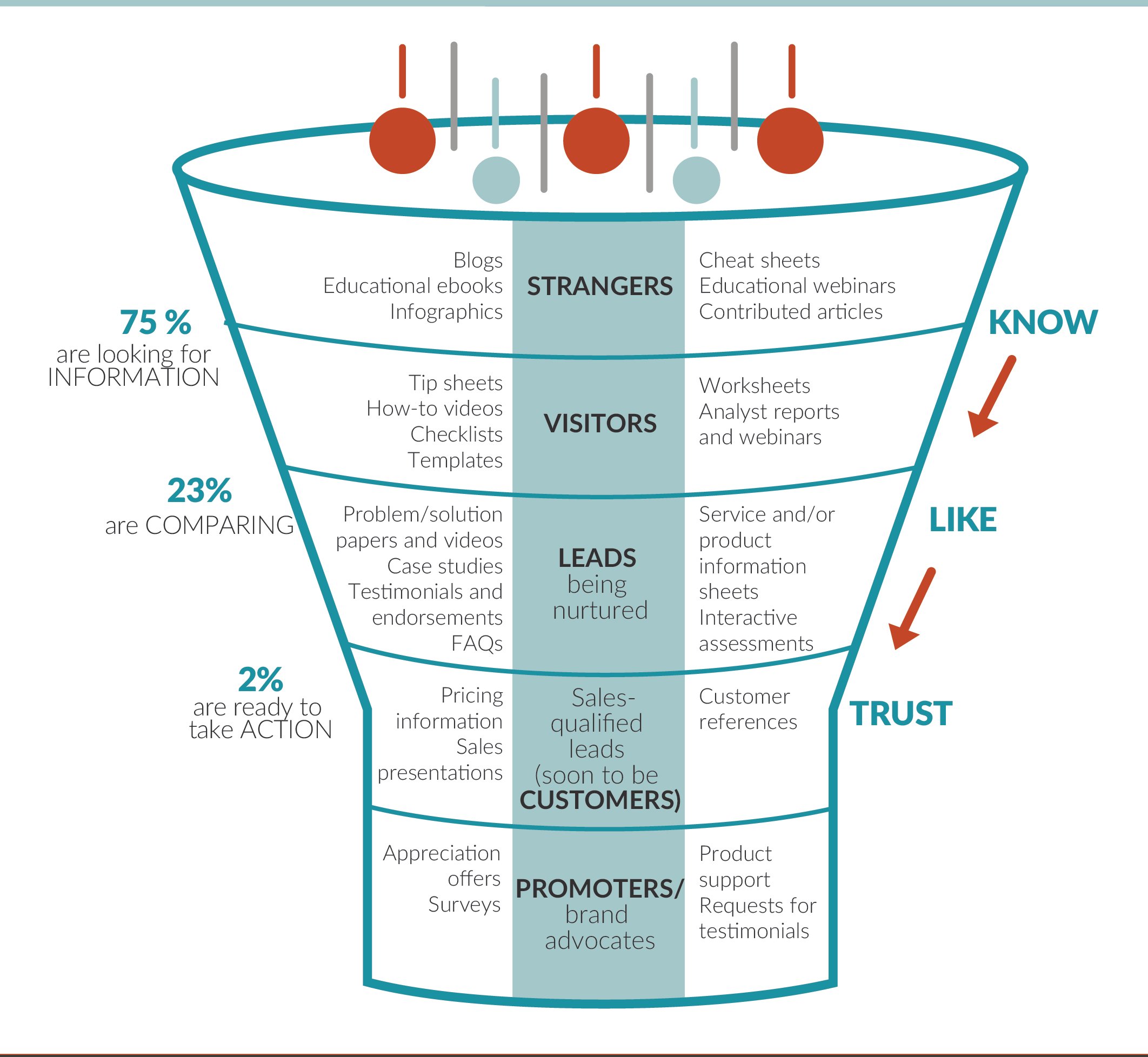
The sales funnel/life cycle/buyers’ journey begins with strangers, people who know nothing about your business yet. It is the “top-of-the-funnel” inbound marketing content that introduces them to your company and website: contributed thought leadership articles, social media posts and shares, shared blog posts, or content they find on your site through an online search.
Strangers become visitors when they reach your website, where along with top-of-the-funnel content in your business blog, they encounter calls-to-action for inbound marketing offers and landing pages. If they choose to complete a landing page form to access one of your offers, such as the whitepapers or templates I mentioned in the earlier section, they are converted into a lead.
Through lead nurturing — an automated series of offers and emails — they are led toward the goal of a closed sale. Then they become customers.
The final level of the sales funnel and inbound marketing customer life cycle is made up of promoters: those satisfied customers who refer others back to you and speak highly of your business.
All of these life cycle/sales funnel stages require different content and communication to meet their needs and keep them involved with your company. Plan each of your campaigns to include something that reaches each stage.
3. Inbound marketing specific customer life cycle
As I said, every business will have its own specific considerations in defining life cycle or buyers’ journey stages for internal use. Creating those life cycle definitions is one area in which marketing and sales need to be in alignment. If the two departments don’t agree on what each stage in the customer life cycle means, it will be difficult to have an efficient exchange of information and hand-off of leads from one department to the other.
Inbound marketing leader HubSpot uses the following stages in its own life cycle consideration: subscriber, lead, marketing qualified lead, sales qualified lead and customer.
(JONES is a certified HubSpot partner; learn more about HubSpot and whether a certified partner can help you make the most of what the HubSpot suite of services offers in these related blog posts.)
HubSpot’s life cycle stages take into consideration specific interactions and qualifications.
-
Subscribers are those individuals who have already opted in to hear from the company periodically, as blog or newsletter subscribers.
-
Leads have taken the next step and filled out a form with more than just an email address, typically for some sort of content offer such as a case study or webinar.
-
Marketing qualified leads have shown greater engagement by accessing specific bottom-of-the-funnel offers such as product demos, but aren’t quite ready for sales yet.
-
Sales qualified leads are worthy of a direct sales follow-up. (JONES defines sales qualified leads as having the right timeline, need, budget and fit for our solution. See our checklist.)
-
Opportunities are sales-qualified leads who are ready to buy.
-
Customers.
How would you define life cycle stages for your company?
What do you adjust for customer life cycle differences?
With your life cycle stage definitions in hand, you can plan a content strategy that includes offers for each stage along the way, along with plotting lead nurturing strategies to move prospects from one stage to the next.
We’ve created a few tools that can help you plan your campaigns in ways that include content to appeal to each stage of the buying cycle, with each campaign focused on a specific buyer persona, as well as guide development of the lead nurturing workflows that will help move leads from one stage to the next.
Download our Campaign Planning Calendar Template and our Lead Nurturing Toolkit to get started.
-1.png?width=1652&height=294&name=Jones(RGB)-1.png)

